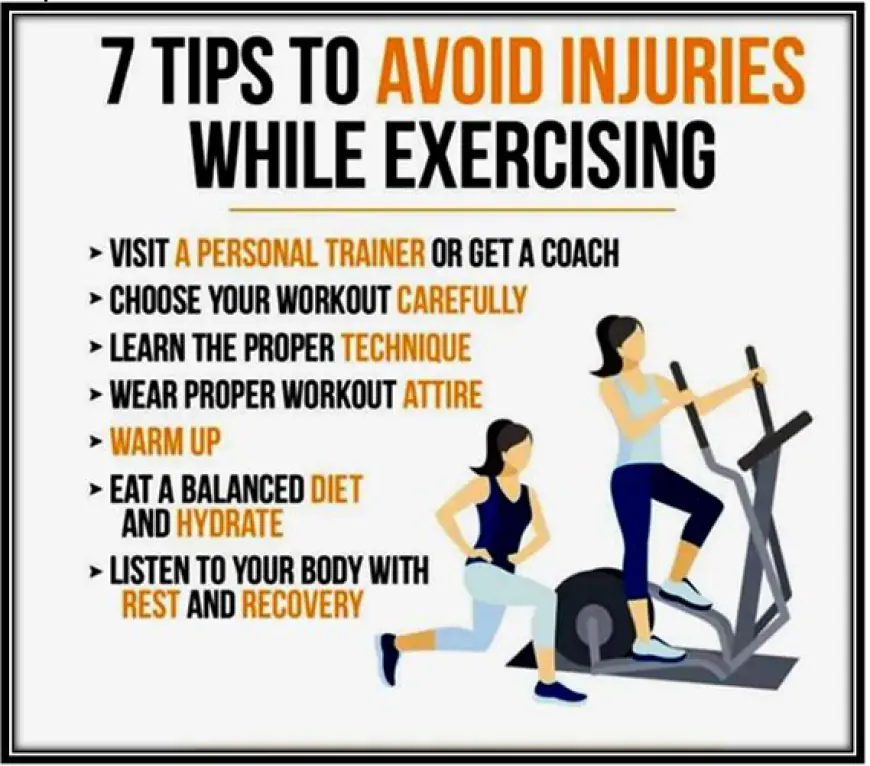How can you prevent injuries while exercising?
Exercise Injury Prevention: Explore expert advice on avoiding workout-related injuries. Stay safe and injury-free with our essential tips.

Introduction: Importance of injury prevention in exercise
Proper equipment is the cornerstone of injury prevention during exercise. Whether it's running shoes with adequate support, a well-fitted bike helmet, or durable weightlifting gloves, using the correct gear is essential for maintaining safety and avoiding potential harm. The right equipment not only provides physical protection but also enhances performance by promoting proper form and technique.
Investing in quality gear tailored to your specific activity not only reduces the risk of injuries but also ensures a more enjoyable and productive workout experience. Ill-fitting or subpar equipment can lead to discomfort, distraction, and ultimately compromise your fitness goals. By prioritizing the use of correct gear, individuals can minimize the likelihood of strains, sprains, and other avoidable ailments that may result from inadequate equipment. Remember: being properly outfitted isn't just about looking the part; it significantly contributes to exercising safely and effectively.
Warm-up and stretching: Proper techniques and benefits
Listening to your body is crucial when it comes to recognizing signs of overexertion during exercise. It's easy to get caught up in the excitement of a workout and push yourself beyond your limits, but ignoring the signals from your body can lead to serious injuries. If you start feeling dizzy, unusually fatigued, or experience sharp pains during a workout, these are clear indications that you need to take a step back and reassess. Additionally, paying attention to changes in breathing patterns, increased heart rate, or persistent discomfort can be early warnings that should not be ignored.
Understanding the signs of overexertion is not just about preventing immediate injury; it also involves long-term health considerations. By heeding your body's signals and knowing when to ease off or seek medical advice if necessary, you can maintain a sustainable exercise routine without risking harm. Furthermore, recognizing these signs allows for adjustments in technique or intensity which may ultimately improve overall performance and enhance fitness progress. Listening attentively will help create an exercise program customized to your unique needs while preventing setbacks caused by overexertion.

Use proper equipment: Importance of correct gear
Cross-training, or varying your workouts by incorporating different types of exercises into your routine, offers a multitude of benefits that can significantly enhance your overall fitness and prevent injuries. By engaging in diverse activities such as swimming, cycling, strength training, and yoga, you can avoid overuse injuries that are often the result of repetitive movements associated with single-type workouts. Additionally, cross-training helps to strengthen different muscle groups and improve overall flexibility and balance which is essential for injury prevention.
Moreover, mixing up your workout routine not only reduces the risk of overuse injuries but also prevents mental burnout. It keeps exercise interesting and enjoyable while allowing your body to continuously adapt to new physical challenges. This variation in workouts also enhances cardiovascular fitness and endurance levels as each type of activity targets different areas of the body. In essence, cross-training not only safeguards against potential exercise-related injuries but also promotes holistic wellness by keeping things fresh and exciting on a physical as well as a mental level.
Listen to your body: Recognizing signs of overexertion
Rest and recovery are often overlooked but are crucial components of any exercise routine. Our bodies need time to heal and repair from the stress of physical activity, and without adequate rest, we put ourselves at risk for burnout and injury. Rest allows our muscles to recover, rebuild, and grow stronger, ultimately enhancing our overall performance.
Moreover, giving the body time to heal is not just about physical recovery; it's also essential for mental well-being. Regular rest can improve sleep quality, reduce stress levels, and prevent mental fatigue. By incorporating sufficient rest periods into your workout schedule, you not only decrease the likelihood of sustaining an injury but also promote a balanced and healthy lifestyle. Remember that rest is an integral part of reaching your fitness goals – allowing yourself this downtime is not a sign of weakness but rather a testament to your dedication to long-term health and wellness.
Cross-training: Benefits of varying workouts
In conclusion, prioritizing injury prevention is crucial for maintaining a healthy and sustainable exercise routine. First, it's essential to start with a proper warm-up to prepare the body for physical activity and reduce the risk of strains or sprains. Additionally, incorporating regular strength training exercises can help improve muscle stability and joint support, lowering the likelihood of injuries during workouts.
Furthermore, paying attention to proper form and technique while exercising is paramount in preventing injuries. This includes using appropriate equipment and gradually increasing intensity to avoid overexertion. Lastly, listening to your body's signals and giving yourself adequate rest between workouts will aid in recovery and minimize the potential for overuse injuries. By embracing these principles, individuals can enjoy their fitness journey while protecting themselves from unnecessary harm.







